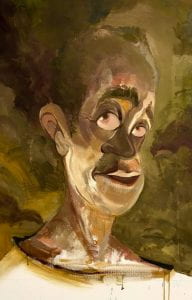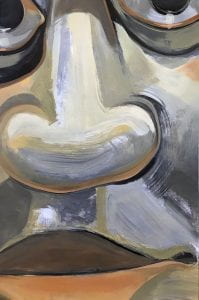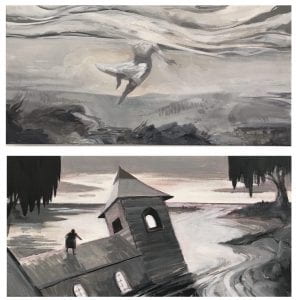At first I used techniques I am familiar with, drawing and painting, flat and static renderings. I questioned what I was doing and looked into the history of kitsch, I reached out to colleagues for criticism on the criteria of personal intimacy over artistry, and I tried to stay both in the work, making it, and at a remove to witness myself making it. I found kinship with Paul Klee, but also with my new colleagues within the program. I spoke openly to my new colleagues around me about the parallel fabricated community I was making. I made it a point to be as vulnerable as possible, and to trust that was enough.
This resulted in a series six paintings and several drawings, ranging from life-sized to monumental, and a lot of painting and crying in actual conversation with the faces emerging before me.
This was a small narrative series of six images depicting a character I associated with my grandmother trying to survive a rural southern environment during a rising flood. This was made alongside the large portraits that I had begun to associate with my grandfather. Those images were difficult experiments into intuition and expression. These images, by contrast, were much more familiar efforts of designed narrative illustration. The two projects functioned together to help me settle into my new reality.


